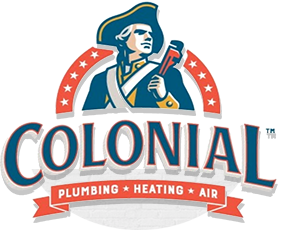Understanding the Basics of a Sprinkler System’s Stop-And-Waste Valve
Everything is always much more complicated than it seems. Take a sprinkler system for example. It turns on, it waters the grass, keeps everything nice and lush, and turns off. And while this is the basic purpose of a sprinkler system and how it works, there are a lot of inner complexities, like a stop-and-waste valve, that allows the irrigation sprinkler system to do its job effectively.
Many homeowners don’t know much about the inner workings of a sprinkler system, and that’s okay. Through this article, they’ll have the opportunity to gain a deeper knowledge of their sprinkler system. They’ll learn about stop-and-waste valves, where they are located, and what it means for homeowners if the valve stops working.
Answering the Basics: What Are Sprinkler Stop-And-Waste Valves?
Every plumbing system has some sort of shut-off valve, so that it can be turned off during an emergency or if homeowners are gone for a long period of time. But what about in the winter months when the sprinkler system doesn’t need to be turned on, and water still needs to be running throughout the rest of the house?
 This is where a stop-and-waste valve comes into play. It allows homeowners to shut off the sprinkler system without shutting off the water to the rest of the house. It also drains water out of the pipes, which prevents them from freezing in the cold winter months.
This is where a stop-and-waste valve comes into play. It allows homeowners to shut off the sprinkler system without shutting off the water to the rest of the house. It also drains water out of the pipes, which prevents them from freezing in the cold winter months.There are three different types of these valves.
- A stop valve uses a rubber gasket to turn off the flow of water.
- A gate valve uses a brass wedge to control the flow of water.
- A ball valve uses a steel ball to turn the water flow on and off.
Where Are Stop-And-Waste Valves Located?
The sprinkler system is installed by digging deep underground and connects the system to the house’s water main, which either comes from the city’s water supply or from a private well. Near the foundation of the house, there is a “compression tee,” which joins the existing piping of the house with the piping of the sprinkler system.

The stop-and-waste valve is then attached to the compression tee and serves as the piece that both separates the two plumbing systems and allows them to work together. Knowing the location of the stop-and-waste valve is important so that homeowners know exactly where to place their sprinkler key in order to turn the valve on and off.
Costs Associated With These Valves
 A malfunctioning stop-and-waste valve can cause problems at any time of year, but it is especially harmful to the plumbing system if it stops working at the end of the summer.
A malfunctioning stop-and-waste valve can cause problems at any time of year, but it is especially harmful to the plumbing system if it stops working at the end of the summer.If the water in the irrigation line doesn’t fully drain at the end of the season, the likelihood of frozen and burst pipes during the winter drastically increases.
When outdoor pipes burst, it is a disaster for homeowners and can lead to other damage like root clogs if the issue is not fixed quickly. These types of plumbing emergencies leave no time to waste and they leave little left in a homeowner’s wallet.
Therefore, it’s best to avoid the hassle and expenses of a burst pipe in the sprinkler system by regularly checking the stop-and-waste valve to ensure its functionality.
About Colonial Plumbing & Heating Co., Inc.
Since 1982, Colonial Plumbing & Heating Co., Inc. has been dedicated to providing more than just top-notch plumbing services. They also provide heating, cooling, and commercial services. Their service contractors know customers by name and have their best interests in mind. They arrive in fully stocked trucks with all of the materials, parts, and equipment needed to solve their customers’ problems in one trip.













